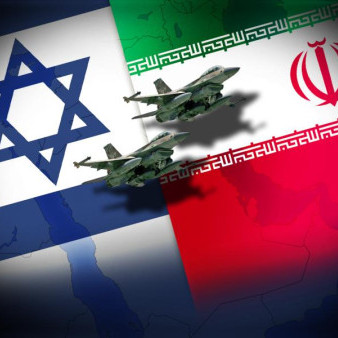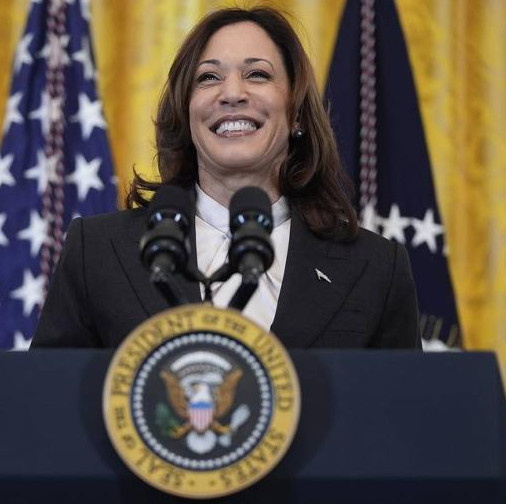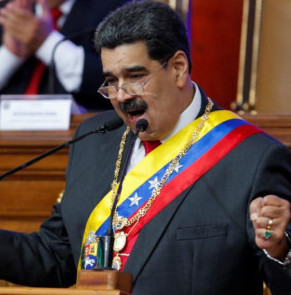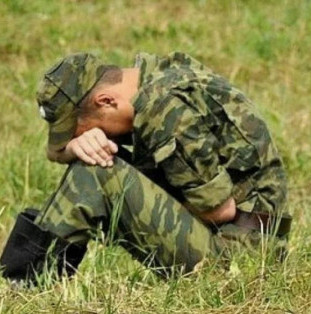Regarding Sunday’s horrific terrorist attacks in Sri Lanka, even the US Ambassador to Sri Lanka, Alaina Teplitz, when speaking to reporters in Colombo yesterday, had to admit “If you look at the scale of the attacks, the level of coordination, the sophistication of them, it’s not implausible to think there are foreign linkages.” ISIS has released a video showing the purported organizer of the Sri Lankan terrorist-attacks, Mohammed Zaharan, leading a group of masked followers, dressed in black, as they pledged allegiance to ISIS.
In addition, a number of the alleged bombers, mostly from privileged and financially secure backgrounds, are known to have studied abroad. Abdul Lathief Jameel Mohamed studied aerospace engineering at Kingston University in south-west London from 2006-07, before going on to do postgraduate study in Australia.
The Sri Lankan defence minister, Ruwan Wijewardene, told the media on Wednesday “This group of suicide bombers, most of them are well educated and come from middle or upper-middle class, so they are financially quite independent and their families are quite stable financially. That is a worrying factor in this. Some of them have I think studied in various other countries, they hold degrees, LLMs [law degrees], they’re quite well educated people.”
In addition to the attacks’ sophistication and the level of coordination which they displayed, another factor worthy of speculation is their timing. As much of a banality as it may seem, the timing and locations of terrorist attacks is never randomly chosen – if terrorist-attacks really were random, then this would defeat the purpose of terrorism as a political strategy.
So in order to attempt to understand the context of these attacks, we have to first look at how they may be connected to Sri Lanka’s recent political and economic history. One of the most salient points which emerges when we look into that recent history is that Sri Lanka is earmarked to play a significant role in the Maritime Silk Road component of China’s Belt and Road Initiative.
Sri Lanka is the location of several major Chinese-backed infrastructural projects which have been unveiled in recent years. The Colombo International Container Terminal is a part of BRI-planning in Sri Lanka, as was the construction of Colombo Port City, which was announced in September 2014 by Sri Lankan President Mahinda Rajapaksa and Chinese President Xi Jinping.
Plans for Colombo Port City were shelved after the fall of the Rajapaksa government, but plans for the Chinese-backed Colombo Financial Centre were announced soon thereafter. However, so far the most significant announcement concerning Sri Lanka’s role in the BRI has been in relation to the planned redevelopment of the port of Hambantota, which was loss-making until, in 2017, China Merchant Ports agreed to pay Sri Lanka Ports Authority $1.1bn for a 70%, 99-year stake in the port.
This is a common factor which Sri Lanka shares with very many trouble-spots across the globe. Syria, Libya, and Afghanistan are all envisaged to participate in the BRI. We might remember that ISIS, which is now known to have been materially resourced by the US government, started to make its first incursions into Syria in 2013 only after China announced the BRI. Even Ukraine had plans to participate back in 2013.
In February 2014, only weeks before he was ousted by a coup d’etat, President Viktor Yanukovich announced the sale of land to the Chinese government for the purpose of building a $10 billion port in Yevpatoria, Crimea. It is highly plausible that the Maidan coup d’etat was prompted not only because the United States feared the expansion of Russian geopolitical influence, but also because they feared the expansion of Chinese geopolitical influence.
In addition to seeing a correlation between the appearance of terrorism and postulating an agenda of disincentivizing participation in the Belt and Road Initiative, we should also note that China has become increasingly invested in the Sri Lankan mining sector in recent years, a development which is integrated with Sri Lanka’s BRI-role and the various Chinese-backed infrastructural projects developing within the country’s interior.
However, we should note yet another recurring pattern in the Sri Lankan story – a very high proportion of the alleged attackers were products of technocratic education. Ever since 2001, a persistent pattern has emerged wherein engineering-graduates, in particular, seem to be over-represented in the ranks of not only Islamic but also Christian terrorists. There seems to be some kind of love-affair going on between terrorism and the engineering profession.
The notorious ISIS-terrorist Mohammed Emwazi (AKA “Jihadi John”) studied information-engineering at the University of Westminister in London. Mohammad Atta was an engineer by profession. Osama Bin Laden was a civil engineer. Among Islamic terrorists, the second most represented profession is doctors. In addition, it has repeatedly been noted that only a tiny percentage of known Islamic terrorists have any theological training whatsoever. Many are religious novices.
One explanation which has been offered for this pattern, by the British activist Maajid Nawaz (himself a former Islamic extremist who had been imprisoned in Egypt) is that when people are trained in scientific or technocratic “black and white thinking,” their capacity to interpret religious texts with any nuance or subtlety is suppressed.
As surprising as it may seem to neo-atheists, the scientific method and its application to technical disciplines, in themselves, seem to produce fanaticism. This suggests one more reason why we need a rehabilitation of humanistic education – we need to produce more people who are trained in the art of reading. More training in the subtleties and nuances of both Koranic and Biblical hermeneutics might very well produce fewer extremists.









